According to my original plan, already on the first day after our arrival in Madagascar and its capital Antananarivo we were supposed to go for a visit to the Royal Hill of Ambohimanga. However, as the owner of the agency through which we rented the car and the driver was familiar with my entire travel plan, he immediately suggested to leave this for the end bearing in mind the large traffic jams – I thought we could go northeast of Antananarivo in the morning and southwest in the afternoon. We were told that it was almost impossible to execute my idea within a day, so Sneža and I simply accepted the proposal.
For this reason, the plan now was that on our way back from the east parts of the country we should go to this site since in that case it would be more or less on our way.
Ambohimanga in Malagasy means blue hill and this place is extremely important for the Malagasy, for the history of Madagascar and that of the Malagasy monarchy. The site inspires strong feelings of national identity and even to the present days it constitutes a holy place and the place of veneration which is regularly visited by pilgrims from all parts of the country.
This hill where there is a traditional fortified royal settlement which the Malagasy called “Rova” had constituted the spiritual centre of the Kingdom of Merina from the 16th century. The kingdom itself existed up until the end of the 19th century. I have already mentioned before that there are 18 ethnic groups on Madagascar, the largest one among them being precisely the Merina people. Their kingdom started from the central highlands of Madagascar and by the 19th century they had already ruled most of the island.
The Royal Hill of Ambohimanga is the cradle of the Merina Kingdom and dynasty which made Madagascar a modern state that was internationally recognised back in 1817. This is also the place of burial of the rulers from the 19th century and for the Malagasy deep reverence of the ancestors, as well as of members of the royal family goes hand in hand and for this reason the place is additionally important and sacred. On account of all of this, the site of the Royal Hill of Ambohimanga is inscribed in the prestigious UNESCO’s World Heritage List.
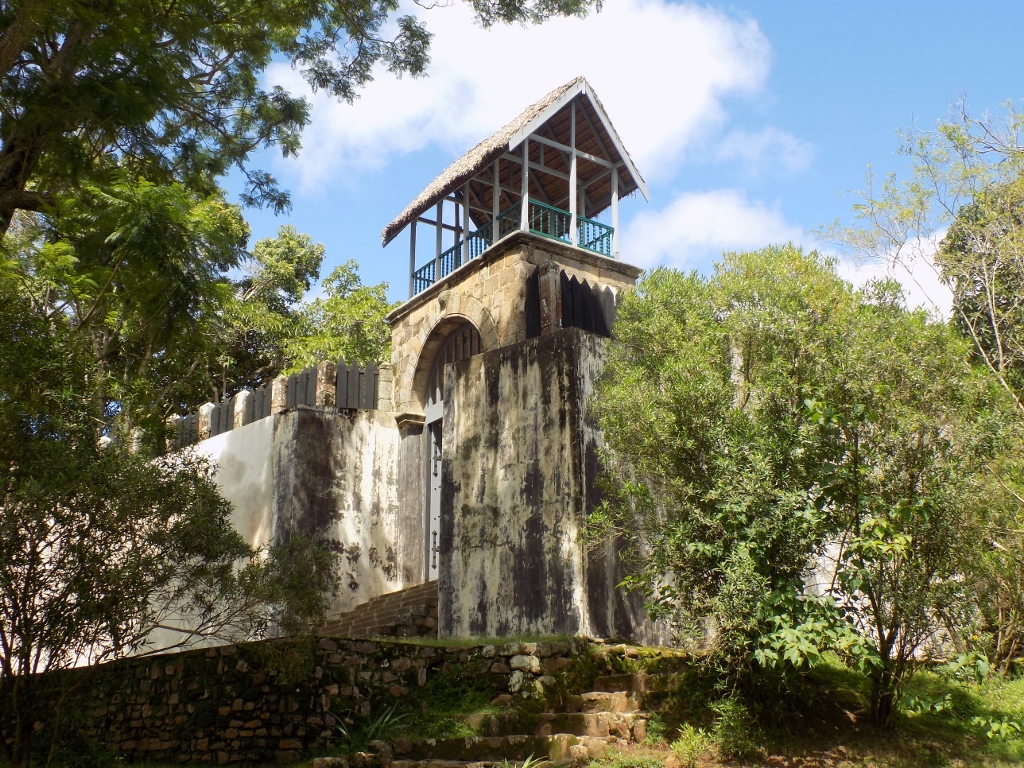 Gate through which visitors enter the area of royal residences
Gate through which visitors enter the area of royal residences
The site includes a system of fortifications with a number of ditches and 14 reinforced gates that are closed by using large circular stones, while in the centre there is a royal “town” that includes two palaces, a small pavilion, an enclosed part for zebu sacrifices, two sacred pools and four royal tombs.
In front of the grandiose gate used to enter the royal centre, there is a spacious square at a couple of levels with several holy trees and there is also a natural rock platform on which sacrifices are made in line with the local tradition. Most often it is zebus that are sacrificed and it is preferable that the animal is brown with a white mark on its forehead.
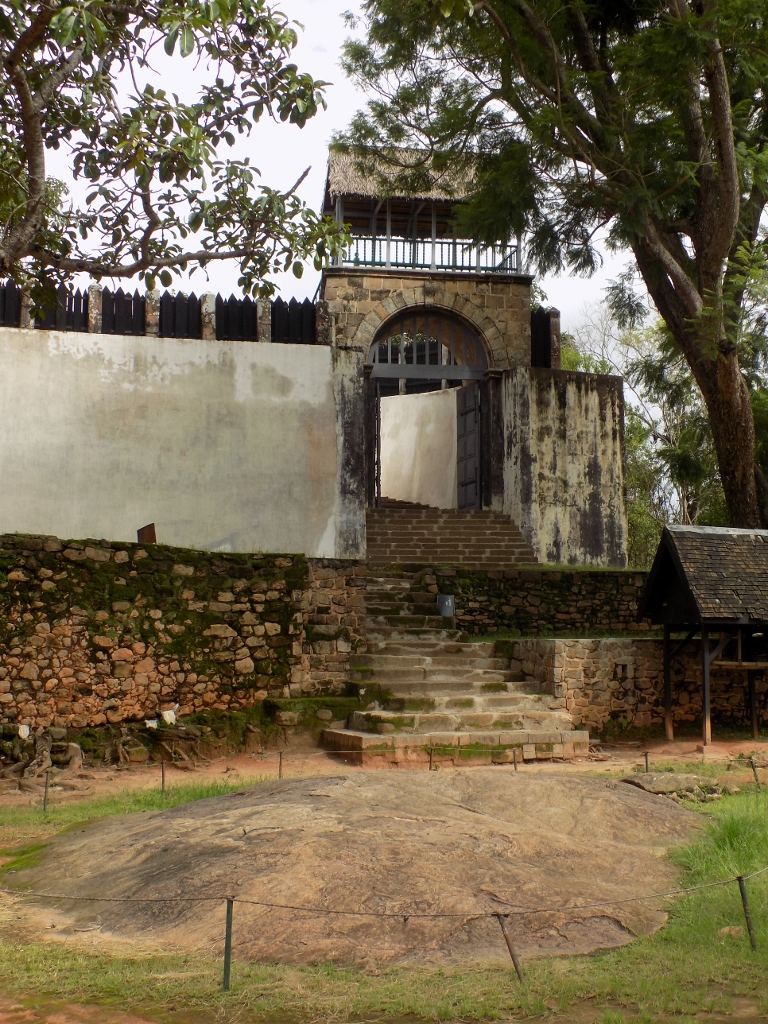 Gate used to enter the royal centre, while in front of the steps there is the sacrificial rock
Gate used to enter the royal centre, while in front of the steps there is the sacrificial rock
Remains of the skulls and horns of the sacrificed animals are then hanged on the wall or all over the tree near the sacrificial rock.
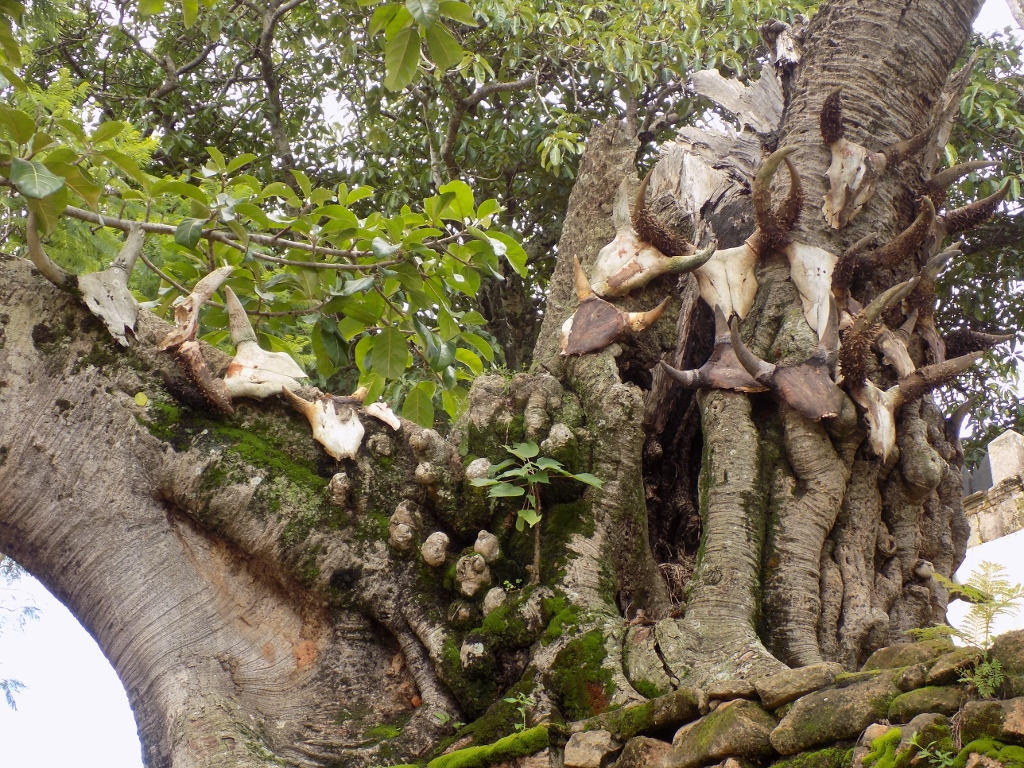 Skulls and horns hanged on the sacred tree
Skulls and horns hanged on the sacred tree
When we bought tickets to this place, Sneža and I got a guide, too. She first took us to a board which displayed a list of the royal rulers of Madagascar during the 19th century and through a short story about those rulers it was possible to get a certain idea about how things went on in this place. And they went on very picturesquely.
King Andrianampoinimerina (1745–1810) successfully brought an end to a civil war that had lasted for several decades and it was precisely during his reign that the unification of almost entire Madagascar took place. For this reason, his status is almost at a mythological level. By the way, if you have troubles saying his name, just look at the name of his mother who was a princess: Ranavalonanandriambelomasina.
The next ruler was a son of the unifier and his name was Radama I (1810-1828). There is a well-known painting of him dressed in a uniform which is like some European military one, since during his reign there was an increased European influence. He died young and was succeeded by his main wife – Ranavalona I who ruled from 1828 until 1861 and who thus became the first female ruler in the kingdom of Merina.
However, Queen Ranavalona I was not much interested in the European influence at all and she particularly persecuted Christians and also prohibited the Christian religion brought to the country by European missionaries. On the other hand (ah, that infamous hypocrisy again!), she intensively used the services of a French engineer and it is widely believed that they were lovers. Be as it may, owing to many things she did during her reign, which were often very cruel, the historians mostly depict her in a very negative light. During her reign the number of residents of Madagascar literally halved!
She was succeeded by her son, Radama II (1861-1863), whose father was officially Radama I, but this was physically impossible since Radama I died more than nine months before his “son” was born. As opposed to his mother, this king was pro-European, but that was not very popular among the nobles and ministers and thus the king was assassinated very soon and the rule was taken over by his wife who was crowned as Rasoherina (1863-1868).
To start with, it seems that nobody missed that assassinated king too much because, as the guide told us, his father “did not have royal blood in him.” This means that he was a “halfling” and I got an impression that it was very important for the Malagasy that their possible royal rulers have 100% of “blue blood.”
Anyway, the leader of that assassination was the then Prime Minister – Rainivoninahitriniony and after a couple of weeks following the coronation he made a political marriage to the queen and practically he continued to rule. However, since he became too big for his shoes in that position, the queen replaced him with his younger brother whose name was a little shorter – Rainilaiarivony and with whom she also made a political marriage.
When Queen Rasoherina died in 1868, she was succeeded by her cousin who was also a widow of the assassinated King Radama II and the new ruler was crowned as Queen Ranavalona II (1868-1883). Prime Minister Rainilaiarivony married her as well in order to retain his position.
Then in 1883, the new queen became a cousin of Ranavalona II and she was crowned as Ranavalona III (1883-1897). Of course, she also made a political marriage with Prime Minister Rainilaiarivony who in this way practically ruled until 1895.
In 1882, France declared Madagascar to be its protectorate, but sovereigns Ranavalona II and Ranavalona III and the Prime Minister/husband rejected that. This was followed by international games of the big powers and wars, France finally won in 1895 and formally established its protectorate in 1896, only to declare Madagascar its colony already the year after. Prime Minister Rainilaiarivony was exiled to Algeria right away in 1895 and there he died one year later. Queen Ranavalona III was exiled from Madagascar in 1897 when the monarchy was abolished and she died in Algeria in 1917.
I don’t know about the others, but I found this story completely fascinating.
After we had heard this story from our guide, we followed her into the Rova, i.e., the fortified section with royal palaces. When I say “palaces” one should bear in mind that what is seen in the central section here does not look like palaces at all. And yet, this was where the rulers of Madagascar used to live.
To start with, I came across an interesting piece of data saying that the enclosure wall of the central fortification was built using cement made of sand, shells and egg whites. The data says that the construction of these walls required 16 million eggs!
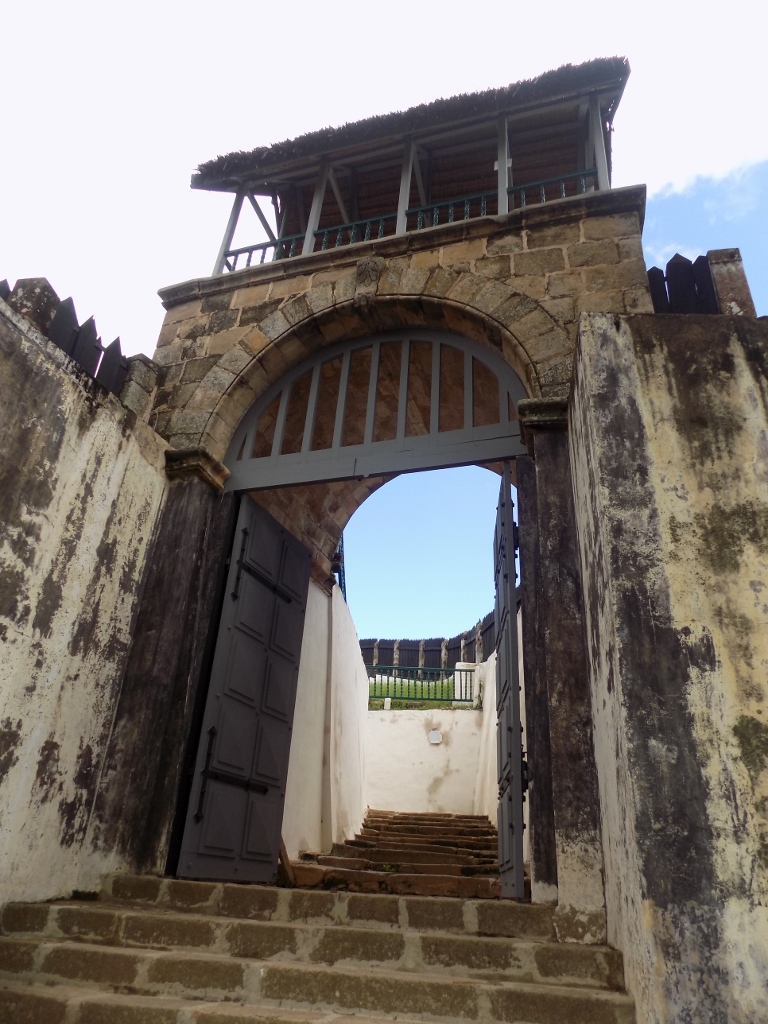 Gate and the passage leading to the palaces with a part of the enclosure wall
Gate and the passage leading to the palaces with a part of the enclosure wall
One of the first parts of the royal complex is a fenced-off section earmarked for the keeping and later sacrificing of zebus.
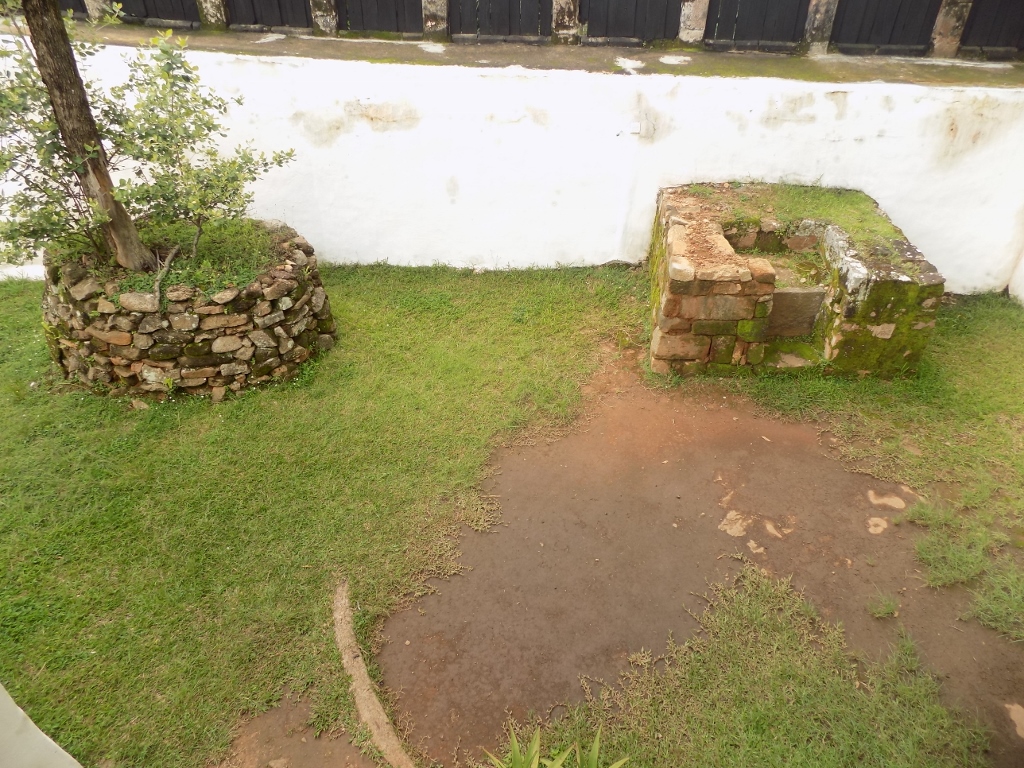 The chosen zebu would be kept here until it would be offered as sacrifice
The chosen zebu would be kept here until it would be offered as sacrifice
And then you come to a flat area, a courtyard, with two palaces or rather “palaces.”
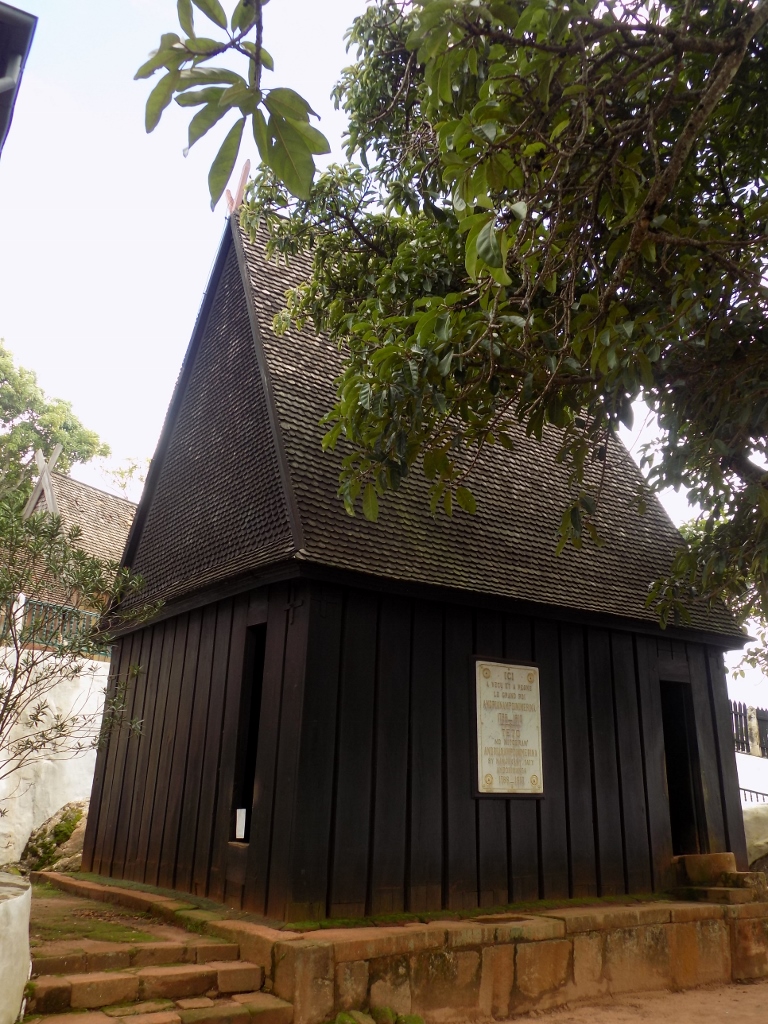 Palace of King Andrianampoinimerina
Palace of King Andrianampoinimerina
A large board displayed on this wooden hut, as we would call it, says nicely that this was where “great King Andrianampoinimerina” lived and from where he ruled. It is permitted to go inside, but no photos are allowed. On the other hand, this is also where the “fady” or taboos rule, so we got strict instructions about how to enter and how to exit the palace. This is the place where the king lived with his main wife (there were 12 of them in total), while the others lived in other palaces scattered throughout the kingdom.
The courtyard is shared by another palace which was for the needs of Queen Ranavalona I designed by her French friend. It was not permitted to take photos or video recordings inside, but we could go to the upper floor and visit this building and its different rooms nicely.
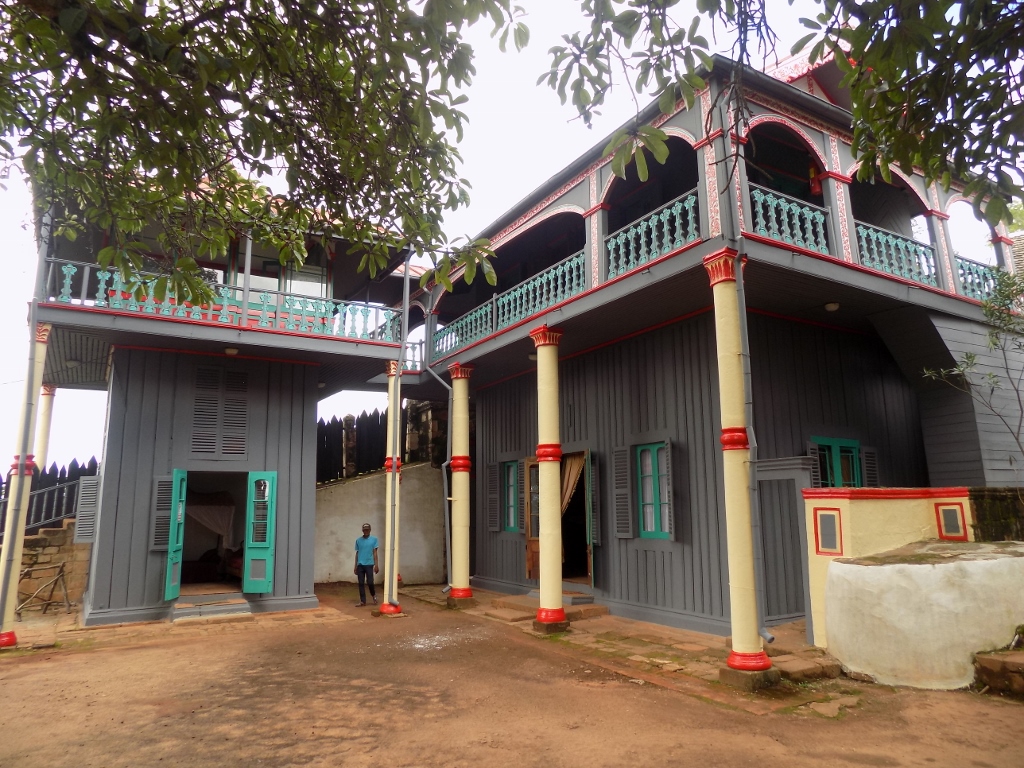 Palace of Queen Ranavalona I
Palace of Queen Ranavalona I
Just like from the outside, from the inside as well, everything was rather modest in comparison to the palaces I have seen around the world, but it is important to bear in mind that this is a part of the local culture and tradition, and should be viewed in that light.
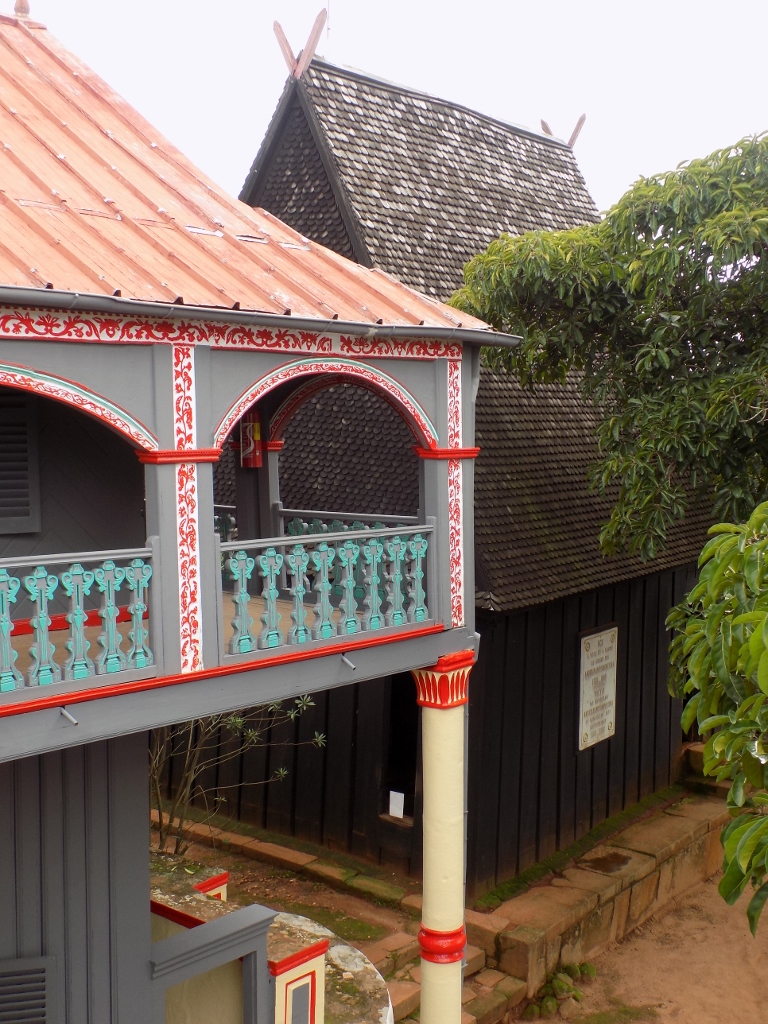 Palaces at the Royal Hill of Ambohimanga
Palaces at the Royal Hill of Ambohimanga
From the courtyard it is also possible to go to a small pavilion from which there is a fine view at the central royal complex.
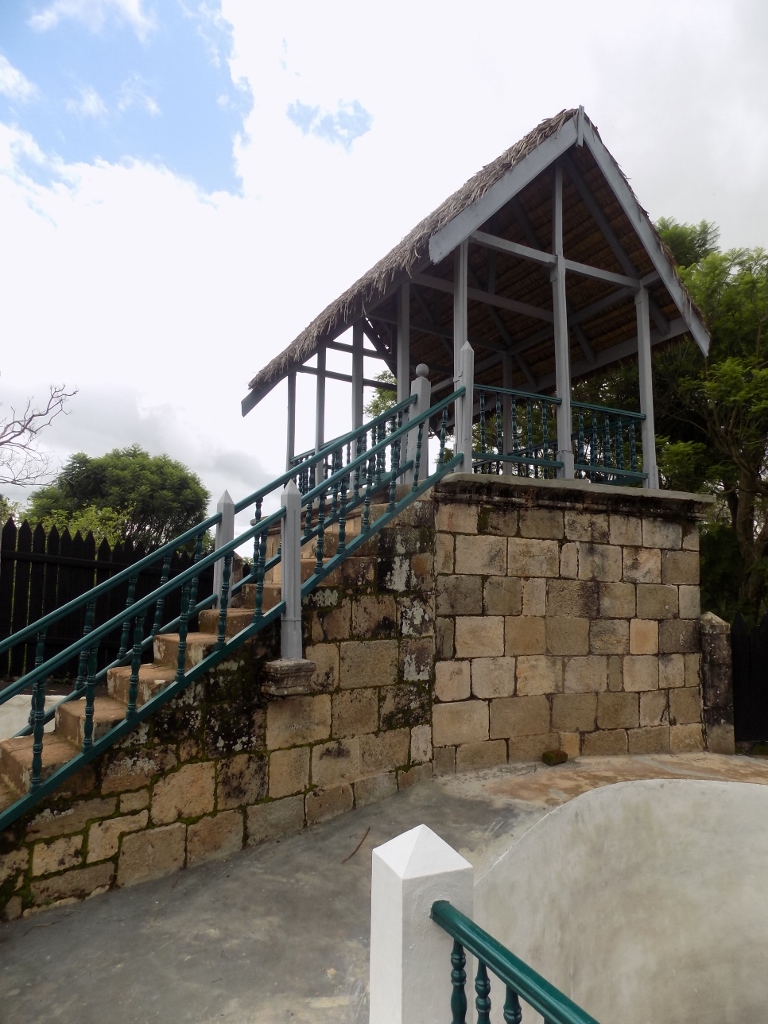 Pavilion
Pavilion
When you go to this pavilion, you can see nicely the stairs we followed in order to enter the complex, as well as a red gate, while in the past it was permitted to be used only by the rulers. All others had to use the stairs in the back of the complex.
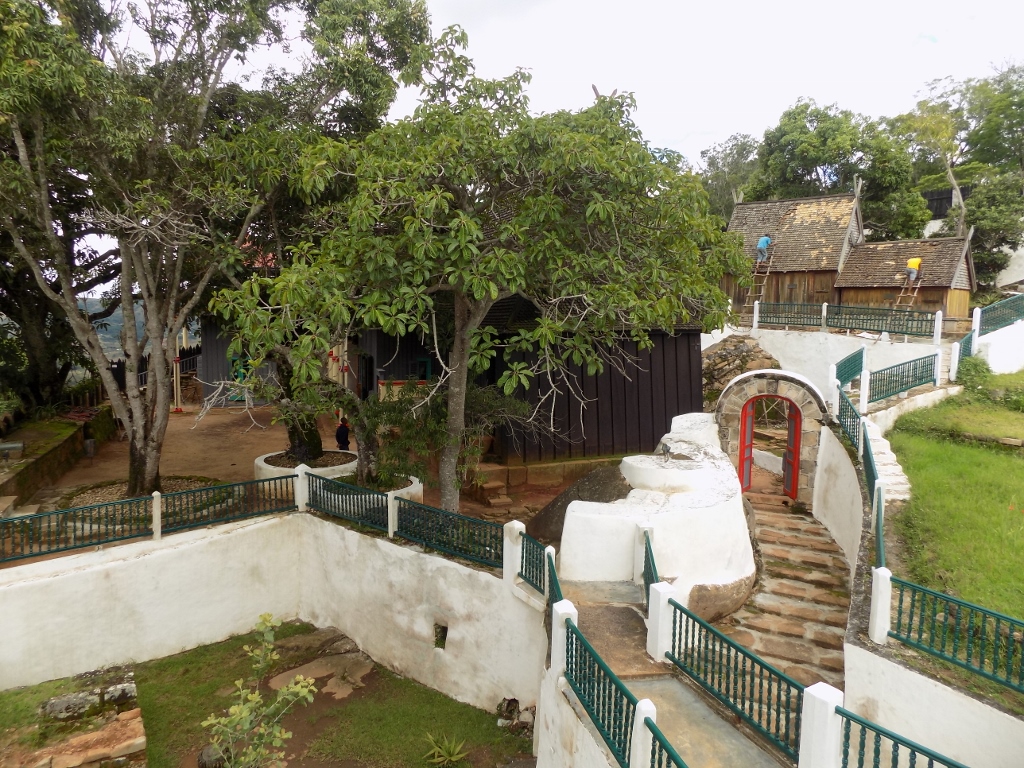 The stairs and the red gate are in the lower right-hand corner
The stairs and the red gate are in the lower right-hand corner
In the photo above, in the upper right-hand corner, it is possible to see a couple of windowless wooden huts. Still, these are not just ordinary huts, but rather these are the royal tombs. At the time we were here, there were works conducted on the rehabilitation of the roofs.
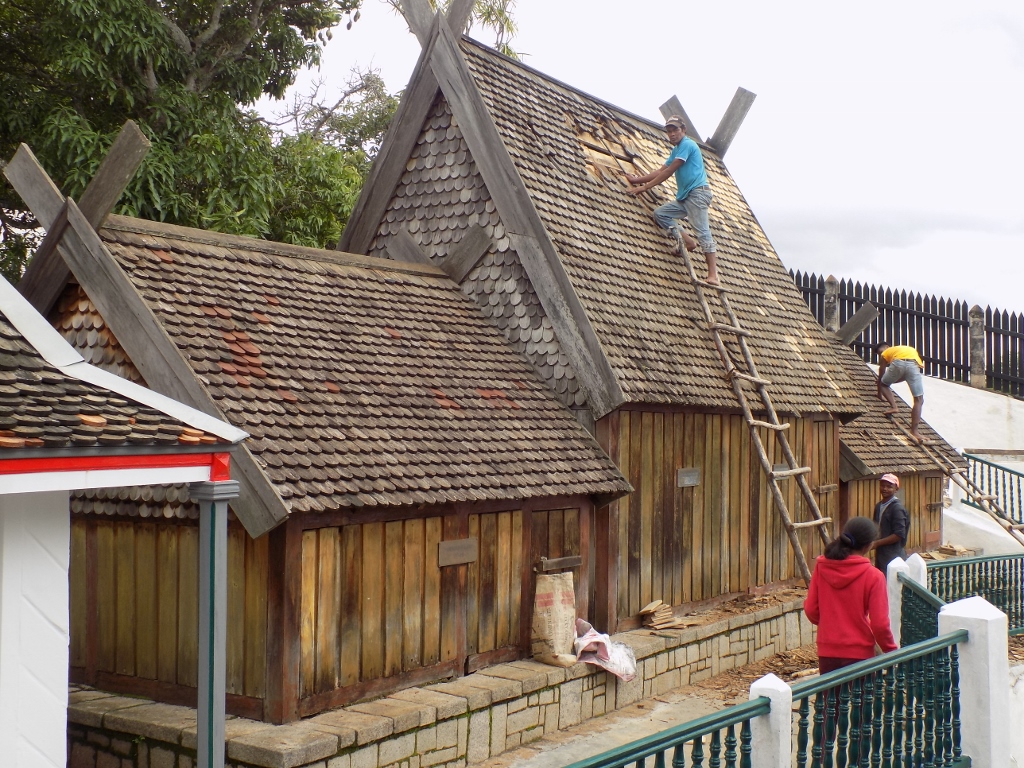 Royal tombs
Royal tombs
In fact, this is where there used to be the royal tombs, twelve of them to be exact, up until 1897 when the French destroyed the original huts and moved the remains of the rulers to the royal palace complex in Antananarivo, the popular Rova of Antananarivo. In 1995, there was a large fire in Rova and it destroyed all the graves and earthly remains of the rulers with the exception of the remains of Queen Ranavalona III. In 2008, the royal tombs in Ambohimanga were reconstructed, while the remains of the last queen of Madagascar were returned here and re-buried.
Following the walk around the royal tombs, Sneža and I went to yet another interesting place. These are two open pools which were allowed to be used only by the rulers and this was specifically for the ritual purification that was done once a year. What makes these pools particular is the information which says that after that bath, the water in the pool was considered holy and then it was distributed to the people who gathered there waiting for the blessing in the form of the water in which the rulers bathed a little and then they would drink that water.
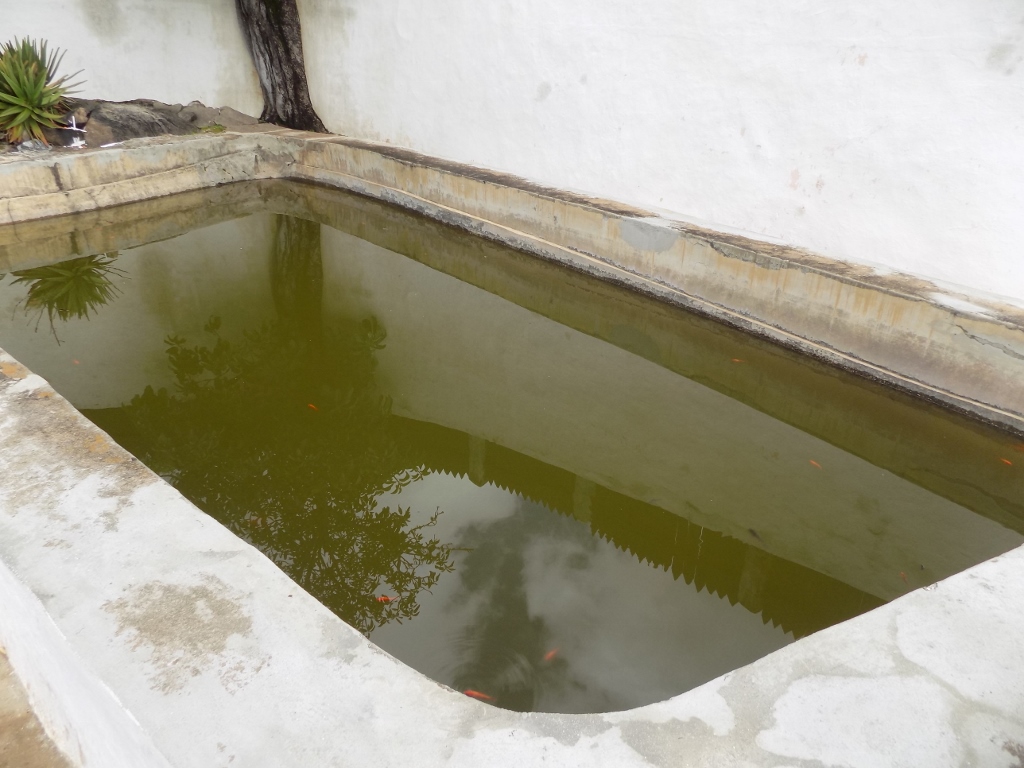 One of the two pools for the ritual bath of the rulers
One of the two pools for the ritual bath of the rulers
In addition to the visiting of the royal palaces, tombs and pools, it is very nice to come here also because from different points within the complex there are some stunning views in all the directions.
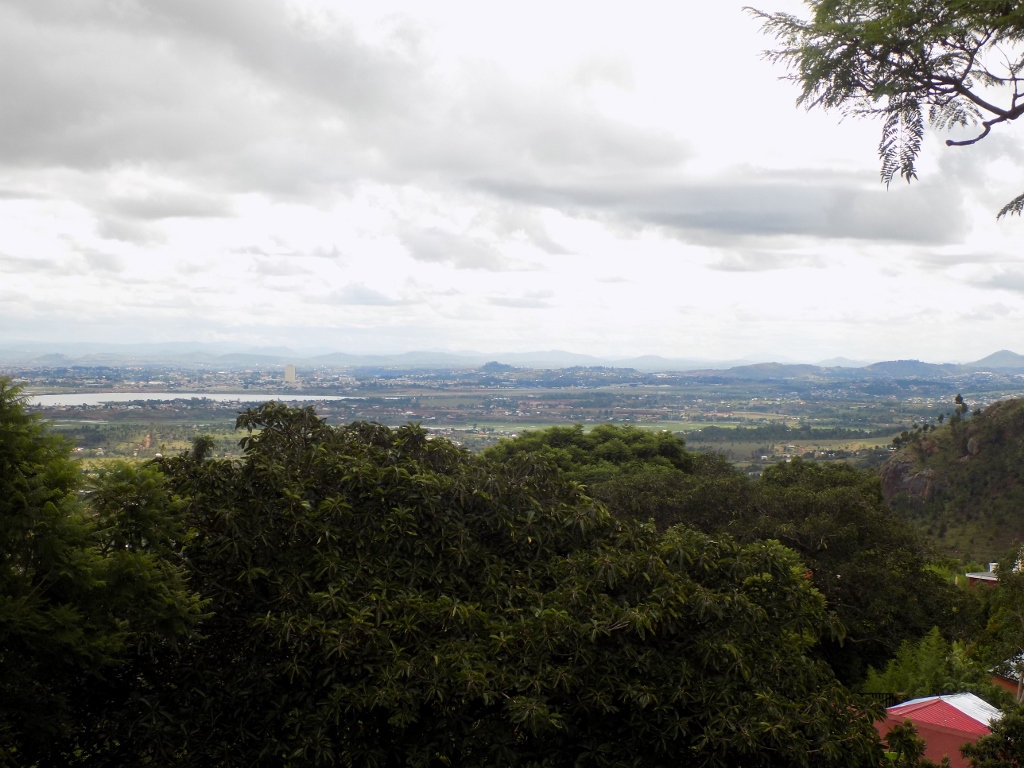 Surroundings of the Royal Hill of Ambohimanga
Surroundings of the Royal Hill of Ambohimanga
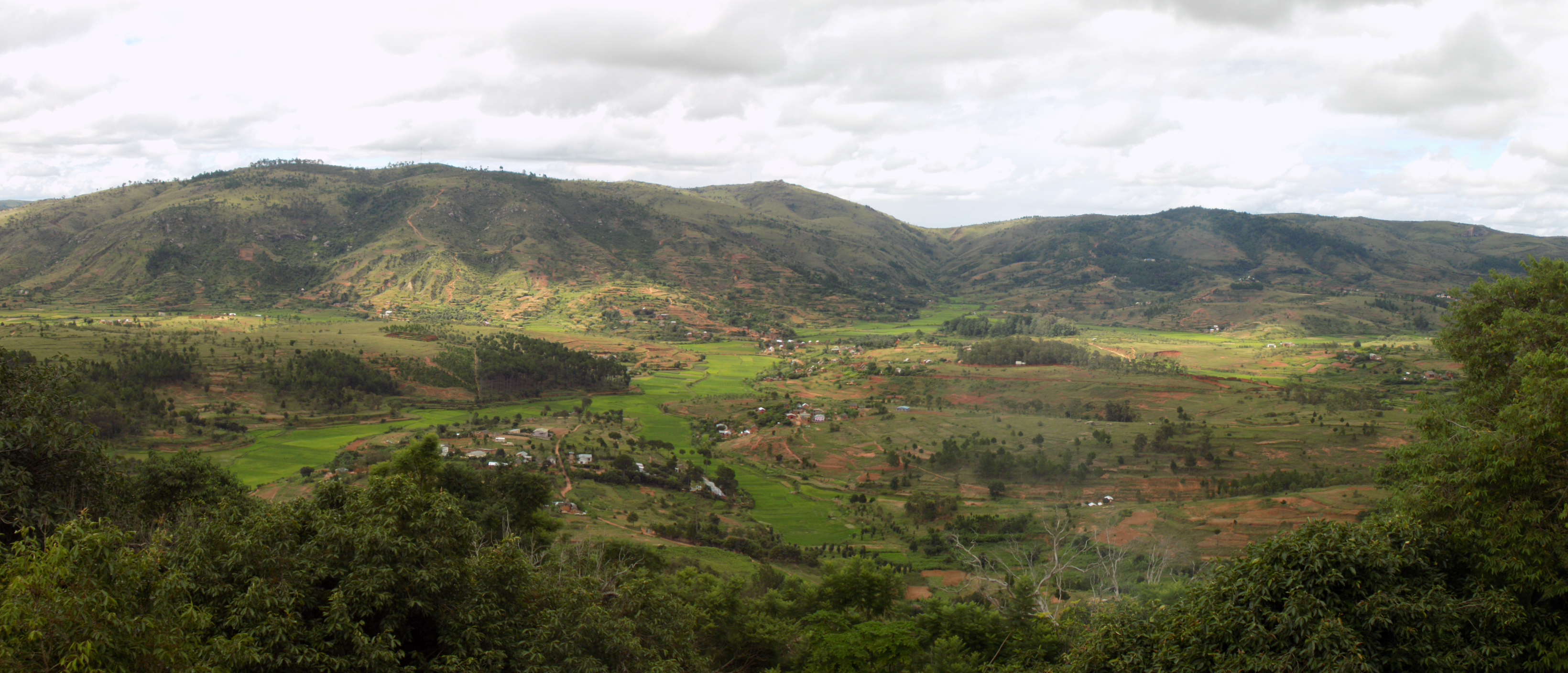

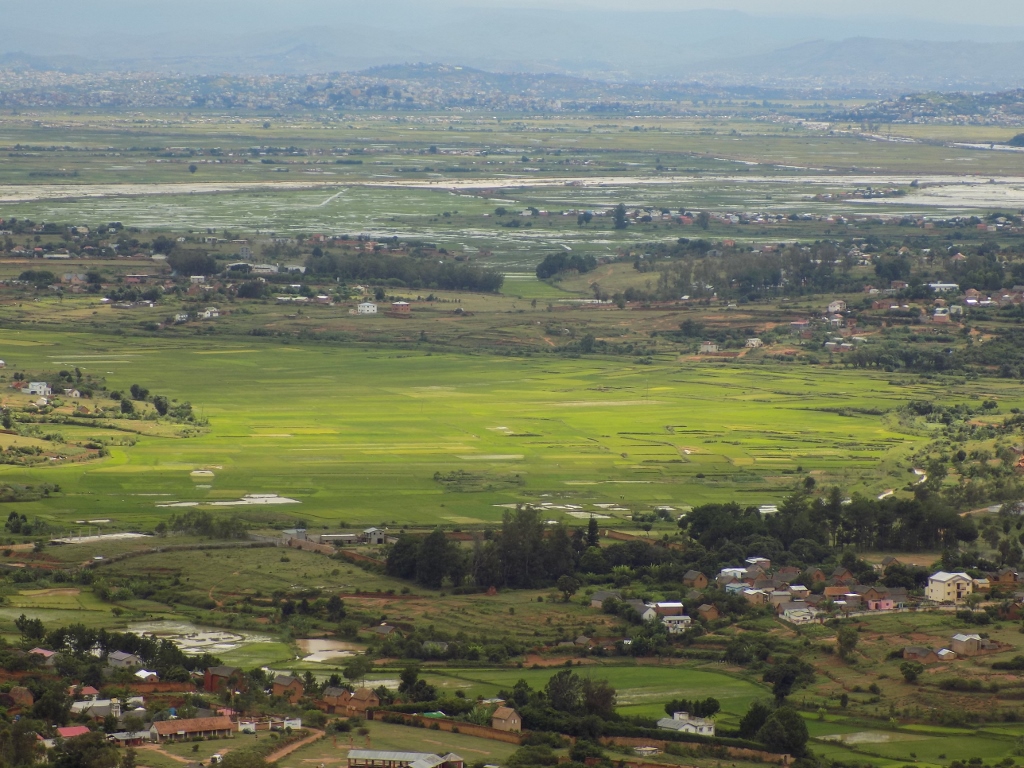 Surroundings of the Royal Hill of Ambohimanga
Surroundings of the Royal Hill of Ambohimanga
Then we walked for a short while around the complex in order to go to another good viewpoint, after which we returned to the square in front of the royal “city” where we met Rija again. When leaving the fortifications, it was possible to see nicely the large rock used for the closing of the gate. In fact, the fortifications include 14 reinforced gates, but they did not have doors as such. Rather, in case of a need, their opening would be closed by rolling a large stone disk like a wheel to the gate.
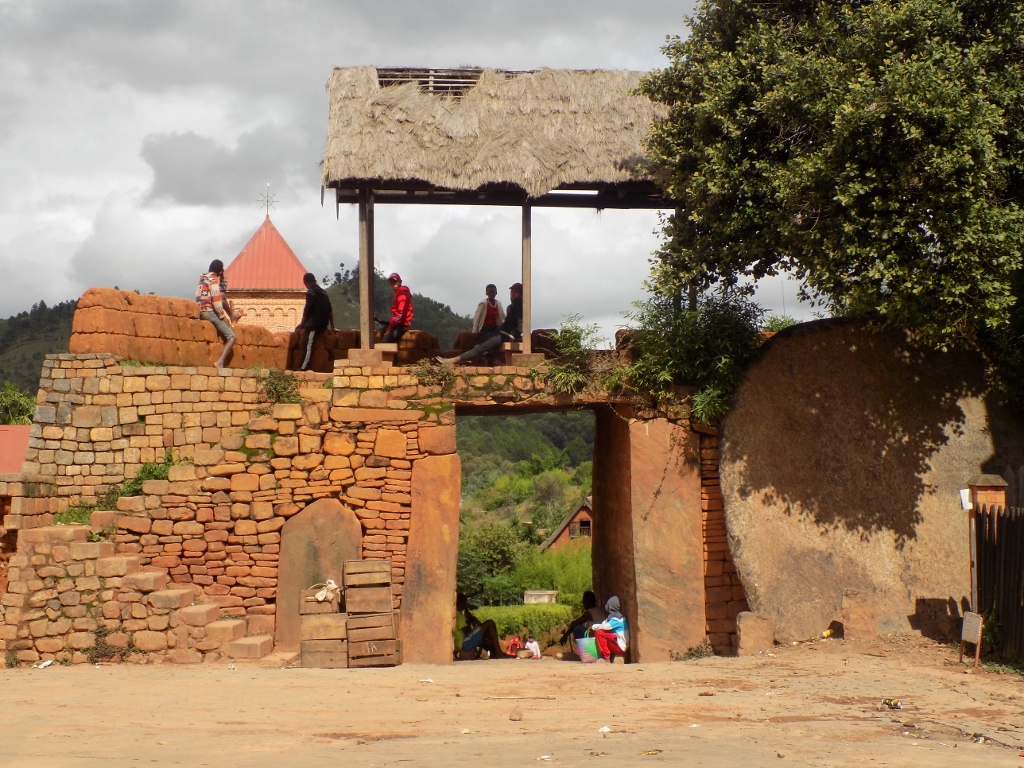 Getting close to the exit from the royal complex of Ambohimanga – the stone disk is on the right-hand side
Getting close to the exit from the royal complex of Ambohimanga – the stone disk is on the right-hand side
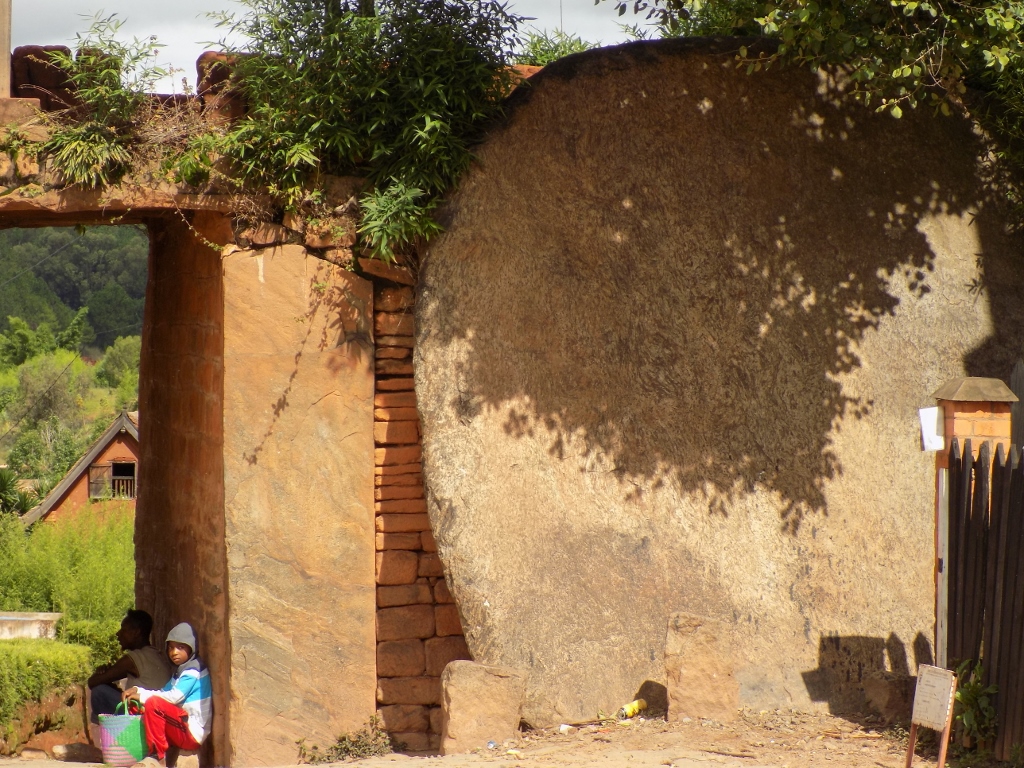 Stone disk from up close
Stone disk from up close
With this we practically finished with our journey by car around Madagascar and the only thing that remained was for Rija to drive us to our hotel in the capital Antananarivo.